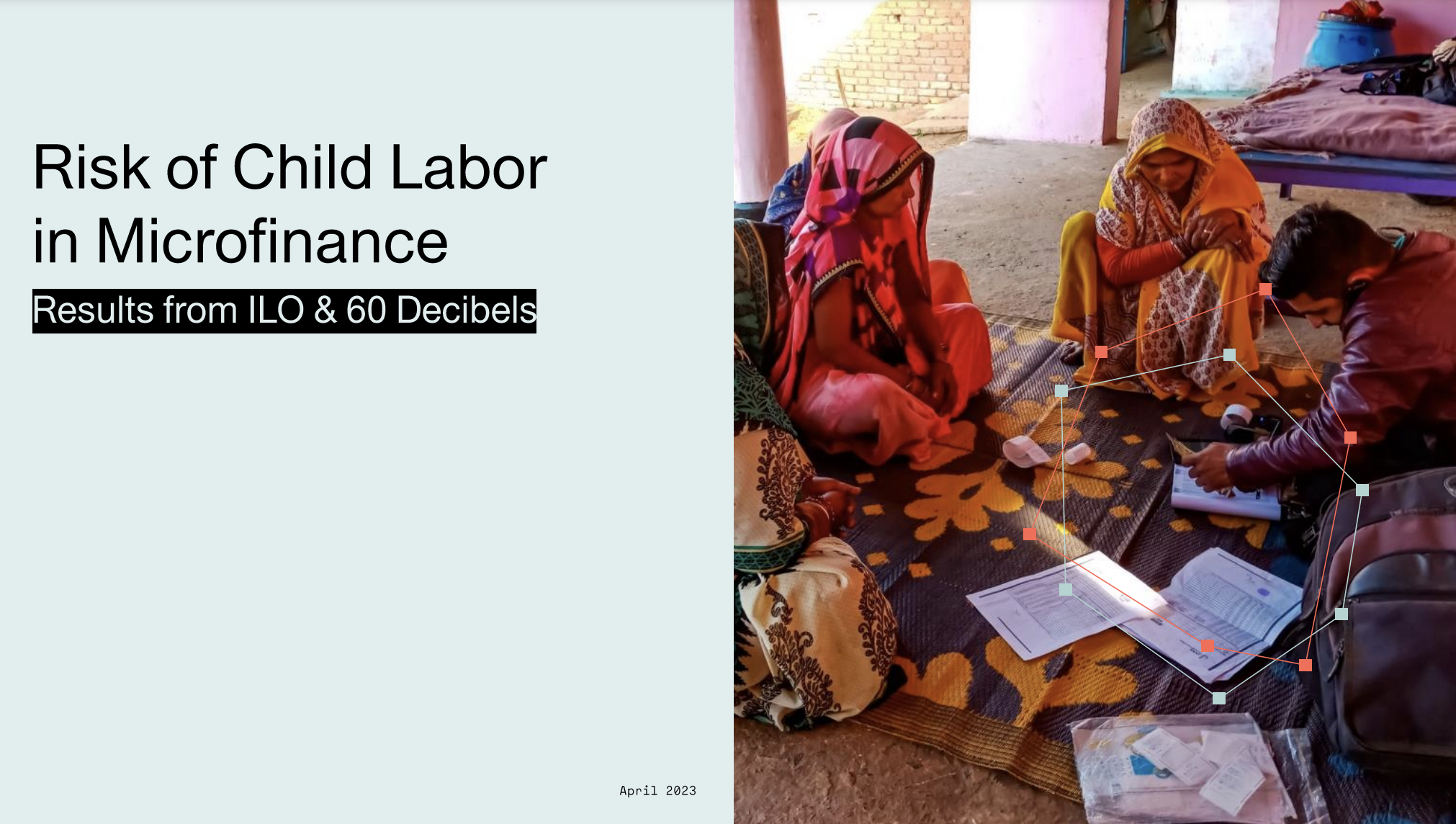
Risk of child labor in microfinance: findings from the ILO and 60 Decibels
Approximately 160 million children around the world are in child labor, accounting for almost 1 in 10 of all children worldwide.
The International Labour Organization (ILO) deploys a range of tools and approaches to combat this scourge, including access to finance. The logic is that, if parents have access to enterprise training and appropriate financial services, they can increase household income and manage risks more effectively, and perhaps not have to resort to child labor. But, in some circumstances, access to finance can have the opposite effect, and actually create a demand for child labor.
To assess this problematic outcome, the ILO’s Social Finance Programme and 60 Decibels spoke with 2,242 clients from eight microfinance institutions (MFIs) to understand how the business used help, paid or unpaid, from children (individuals below the age of 18). This report presents several interesting findings about the impact and risk of child labor in microfinance.
“I was not able to take my children to school because they have to help me with work to get more income.”
MFI Client
Top insights from the report
21% of clients report receiving business support, paid or unpaid, from individuals under 18
Family under 18 is the most common type of support.
Clients in West Africa are 29 percentage points more likely to say they receive business support under 18 compared to the other regions included in this report (36% versus 7%) – suggesting risk of child labor is with microfinance clients is higher in West Africa.
There are significant differences in five 60 Decibels Microfinance Indicators
They are income change, employment increases, amount spent on education, worry about finances, and reduced household food consumption to make repayment when we compare clients who say they receive support under 18 to those who do not receive business support from individuals under 18.
These differences can be found in the performance snapshot (page 6) and in detail in pages 11, 13, 15, 17 & 19.
1 in 3 clients who have decreased the amount they spend on their children’s education say this is because of personal factors, or factors that are deemed within the control of the client
The most common personal factors among clients include decreases in business income, the child dropping out of school, prioritizing business spending, or using the loan for another purpose (page 9).